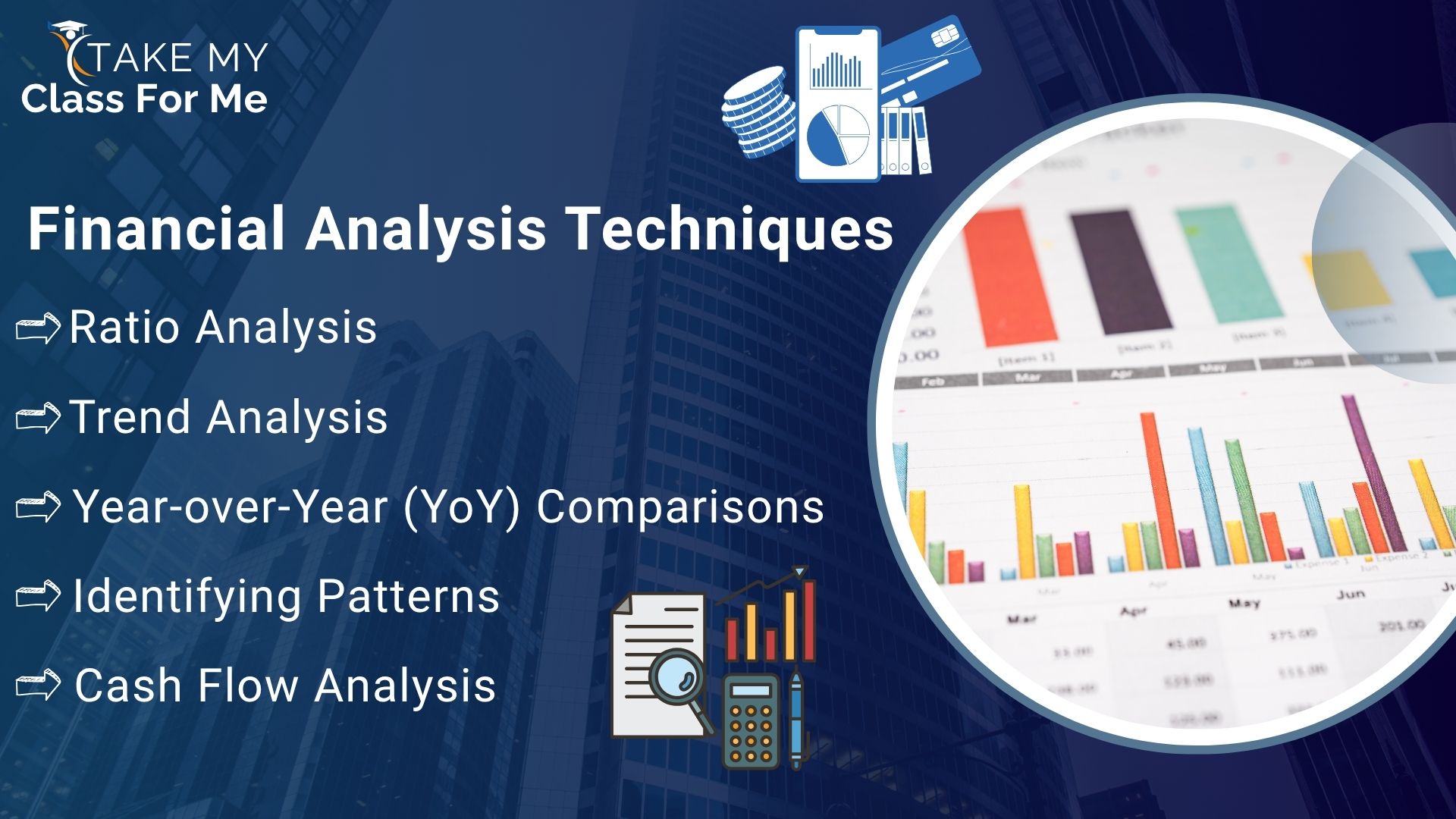You can make better financial decisions by using financial analysis in the planning stage. It will help you understand your financial situation, identify risks, and find opportunities. Especially, by analyzing finances, businesses can create a solid plan, achieve their goals, and take control of their financial future.
Financial analysis is important for planning budgets, making investment decisions, and evaluating financial performance. Specifically, it will help businesses to make informed decisions by studying their financial data and turning it into useful insights. Also, it will help to identify potential financial problems, which is important for managing risks. The main goal of financial analysis is to provide the necessary data for making wise decisions. This will make it a key part of strategic financial planning. Simply by looking at financial statements, companies can understand their financial situation and make smart decisions. If you wonder how financial analysis helps to make better decisions during financial planning, read this blog. Here, we have shared a detailed overview of financial analysis, including its types and techniques.
Financial Analysis and Its Types
Financial analysis looks at a company’s financial statements, performance, and market trends to make smart business decisions. The financial analysis is of three main types. They are
- Quantitative Analysis: It uses numbers to measure financial performance.
- Qualitative Analysis: It considers non-numerical factors, like the quality of a company’s management.
- Internal vs. External Analysis: It compares a company’s financial performance to external standards or benchmarks.
Importance of Financial Analysis in Financial Planning
These are the significance of financial analysis in financial planning
- Strategic Planning: It ensures that long-term business goals align with financial capabilities.
- Risk Management: It identifies potential risks and helps develop strategies to manage them.
- Investment Decisions: It assesses risks and supports informed decisions for large investments.
- Budget Forecasting: It helps to predict future financials and develop strategies to achieve budget goals.
Financial Analysis Techniques

To perform financial analysis, you must use the best tools and techniques. The following are some important financial analysis techniques, you can consider for examination
Ratio Analysis
Ratio analysis is one of the best ways to understand a company’s financial performance. It focuses on comparing different parts of its financial statements, like the income statement and balance sheet. Mainly, ratio analysis helps to determine important factors like profitability, liquidity, and solvency. By using ratio analysis, businesses can assess risks, ensure financial stability, and make informed decisions. Also, this technique plays a crucial role in financial planning and helps companies stay on track.
Ratio analysis has four main parts:
- Profitability Ratios: It measures profit and return on investments.
- Liquidity Ratios: It evaluates a company’s short-term financial health.
- Solvency Ratios: It assesses a company’s ability to manage long-term debt.
- Efficiency Ratios: It measures how well a company uses its resources and manages operations.
Trend Analysis
This approach analyzes past financial data to identify consistent patterns and trends. By looking at past trends in revenue, expenses, and profitability, businesses can make smart choices. Trend analysis primarily supports companies in assessing their financial health, developing strategic plans, and optimizing investment strategies.
Year-over-Year (YoY) Comparisons
This method involves comparing financial results from one year to the same time frame in the previous year. It enables businesses to recognize seasonal patterns, track performance progress, and make well-informed financial choices. YoY comparisons are valuable for reviewing financial progress, creating budgets, and making smart investment decisions.
Identifying Patterns
Financial pattern identification involves reviewing past data to detect patterns in revenue, expenses, and other critical financial indicators. This helps businesses to grasp their financial situation and make better decisions.
Cash Flow Analysis
This method examines a company’s inflows and outflows of cash to assess its liquidity, financial stability, and ability to meet commitments.
Cash Flow Analysis has three main parts:
- Operating Cash Flow (OCF): It measures the cash generated from sales and other business activities. Generally, a positive OCF will indicate good financial health, while a negative OCF will suggest cash flow problems. This analysis will help businesses determine if they can operate without external funding and make investment decisions.
- Financing Cash Flow (FCF): It tracks funding-related cash transactions, like borrowing, debt repayment, and stock issuance. A positive FCF will show that a company is receiving funds from lenders or investors, while a negative FCF will indicate dividend payments or loan repayments. Overall, this analysis will help to understand a company’s capital structure.
- Break-Even Analysis: This is the point where a company’s total revenue equals its total expenses. It results in neither profit nor loss. Break-even analysis will generally help businesses set prices, manage costs, and determine sales targets. Simply by using break-even analysis, companies can make informed decisions and plan for financial success.
Best Financial Analysis Tools
Technology has transformed financial analysis by making it more accurate, efficient, and decision-friendly. Especially, with the help of financial analysis software, businesses can record, manage, and analyze financial data effectively. Also, they can automate financial processes and generate reports that support the decision-making process. These are some popular tools you can use to perform financial analysis
- QuickBooks: It is the best tool for small and medium-sized businesses to track finances, create invoices, and manage accounting.
- SAP: This software helps large enterprises to manage finances, accounting, risk, and planning.
- Microsoft Excel: It is a versatile tool that businesses can use for financial forecasting, budgeting, and data analysis. This software features advanced algorithms and pivot tables.
How Financial Analysis Supports Strategic Planning
Financial analysis is crucial for making informed decisions that drive business growth and strategic planning. Specifically, by evaluating financial performance and interpreting data, businesses can make successful decisions. Typically, using financial analysis for budget planning will optimize resource allocation. Meanwhile, financial ratios in the decision-making process will help businesses in determining their profitability.
Financial analysis plays a key role in decision-making across these three main areas
- It provides investors with insights into a company’s financial health. This, in turn, will help them to make informed investment decisions.
- Financial analysis helps lenders assess a company’s ability to repay debts and strengthen risk assessment.
- It helps companies allocate limited resources effectively. This makes it crucial for planning and decision-making.
How Financial Analysis Helps in the Decision-Making Process
Financial analysis is crucial for business decision-making because it provides insights into a company’s financial health, identifies potential risks, and informs growth strategies. Here is how it guides decision-making:
Strategic Financial Decisions
Financial analysis will enable businesses to make smart decisions about mergers, acquisitions, and expansions by forecasting whether they will be profitable. It checks a company’s financial health before big moves and evaluates if expansion will bring in enough money. This helps companies like Disney decide if a merger is a good idea for long-term growth.
Investment Planning
Financial analysis will help investors to make smart decisions by predicting how well a stock might perform. It involves studying stocks using key numbers like price and earnings, considering the risks and potential gains, and finding stocks with good growth potential. Warren Buffett’s company, Berkshire Hathaway, is a great example of using financial analysis to make successful long-term investments.
Risk Assessment and Mitigation
Financial analysis will aid companies in identifying potential problems and planning ways to reduce losses. It involves preparing for economic slowdowns, managing cash flow risks, and keeping enough cash on hand. Banks that carefully assessed risks before the 2008 financial crisis were better equipped to handle it.
Performance Monitoring
Evaluating financial performance against targets will help companies grow steadily and work efficiently. It involves looking at financial numbers, sales growth, and profit trends, and comparing them to similar companies. Amazon’s close tracking of financial metrics shows how using data to make decisions leads to long-term success.
Wrapping Up
By now, you will have gained a good understanding of what financial analysis is and how it helps to make better decisions during the financial planning stage. In case you are still not clear about financial analysis, reach out to takemyclassforme.us.com and send a ‘take my finance class for me’ request. The subject experts on our platform will guide you in improving your understanding of the financial concepts, including the approaches and tools to analyze financial statements to make informed decisions.





